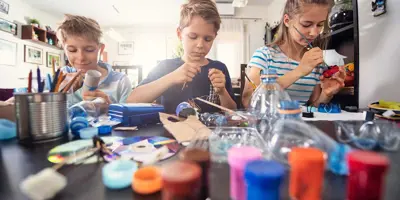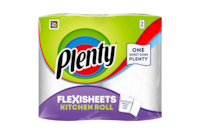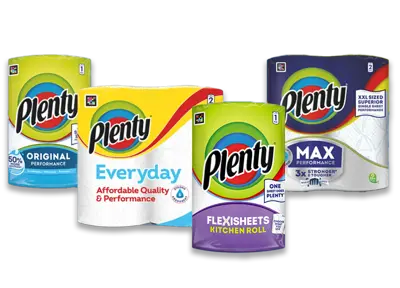3 people found this helpful
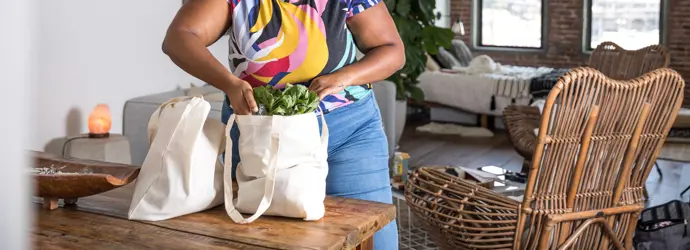
Whether it’s rounding up the troops for a sweaty jog in the sun or starting a new diet that leaves bellies gurgling and bathrooms forbidden zones for 2-3 hours after use, we’ve all tried to adopt healthy habits that haven’t always lasted. But what about eco-friendly living? Adopting a sustainable lifestyle is great for you and the planet, and it could be the habit that sticks!
Living sustainably is something we all aspire to do, but what exactly does that mean, and what changes can we make to live a sustainable lifestyle? Well, great news! These sustainable living tips are already within your reach! So, read on for our top tips on how to be sustainable at home and ways to live sustainably on the go and at work.
Defining a “sustainable lifestyle”
Let’s start with a definition of living sustainably. Put simply, sustainable or eco-friendly living is a lifestyle in which you attempt to reduce your usage of the planet’s natural resources.1 This is achieved through reducing your carbon footprint by making positive changes in your everyday life.
Sustainable living examples might include walking or cycling to work instead of taking the car, going for a plant-based diet, or shopping for clothes second-hand or from sustainable, local retailers. The chances are, you’re already doing some of these things. Go you!
Why is living sustainably important?
A sustainable lifestyle is important to help minimise damage to our planet. The consequences of climate change (long-term changes in temperature and weather) can be severe, including rising sea levels, droughts, flooding, storms and melting polar ice.2 Often, shifts in climate can be put down to natural causes like volcanic eruptions, for example.3 However, it’s what we do that’s had the biggest effect on climate change over the last few hundred years, making learning how to live sustainably more important than ever.
Climate change can be a bit daunting; it’s important to remember that living sustainably is not all on you or any one person. All we can do is do our bit and educate others. So, if you’re feeling overwhelmed, take a breath, and be happy in the knowledge that every step towards eco-friendly living is a positive one. And with so many ways to be sustainable, you and your loved ones can find the balance that works for you, while taking care of the planet we share.
How to live sustainably
In everyday life, there are 5 key areas in which you can make changes to lead a sustainable lifestyle:
- Diet
- Waste
- Energy consumption
- Transport methods
- Product choice
You’re probably already making sustainable choices in a few of these areas already, but let’s take each of these ways to be sustainable in turn. Some might be easier to implement than others (carnivores – look away at the first point!) but there will likely be one or two initiatives in each area that you can start to implement right away when you finish this guide.
1. How to live sustainably through diet
You are what you eat, or so the saying goes, and while that’s not completely accurate (tell that to the little one stomping around the garden covered head to toe in sweet and sticky ice cream!), the message rings true: our dietary choices can have a big impact on us. Your diet also has a big impact on your sustainable lifestyle. Examples of sustainable food choices include:
- Going plant-based: Switch to a fully plant-based diet, or if that’s too much too fast, try to swap out a few meaty meals per week for plant-based alternatives. Try to reduce the amount of meat and dairy that you eat – it’s more harmful to the environment than other food.4
- Shopping and eating local: Eat locally produced food – it will have lower food miles and therefore a smaller carbon footprint. Plus, supporting local businesses is great for the local economy!
- Shopping and eating seasonal: Eat seasonal produce – it won’t require as much growing assistance or transportation.
2. How to be sustainable at home through reducing waste
Reducing the amount of waste which you produce is one of the key ways to start living sustainably. It’s all about the three Rs: reduce, reuse, recycle! Buy less in the first place, reuse instead of throwing away, and choose items that can be recycled. With “reduce, reuse and recycle” in mind, follow these sustainable living tips:
- Reduce food waste: Take stock of leftover ingredients and make meal plans based on what’s left. Cooking everything in your fridge and cupboard without throwing anything away (even that solitary squidgy tomato squashed and bleeding seeds in the corner of the vegetable drawer) is incredibly satisfying! When you go food shopping, write a shopping list and buy only what you need and what you know you’re going to eat. Use leftovers and repurpose scraps by starting your own compost bin.
- Reduce water waste: In the bathroom, opt for a shower instead of a bath (save those for the end of a long week!) and turn off the tap when brushing your teeth. In the garden, collect rain in a butt to water your plants in the drier months, and around the house, use the washing machine only when there’s a full load – and on a lower temperature setting.
- Reduce waste through upcycling: Instead of binning faulty items, learn how to fix rather than replace them. Invest in a sewing machine and learn how to mend clothes, and also try your hand at upcycling furniture. You’ll be amazed at what you can do with a lick of paint!
Tip
Did you know Plenty Original is now certified compostable?* That’s right, once you’ve dealt with your compostable mess, you can throw your sheet on the compost heap and let it get to work transforming into nutrient rich soil. Check out what can and can’t be composted before you do, though!
3. How to be sustainable at home through energy consumption
You can also make sustainable choices at home through your energy consumption. Sustainable living examples in this area include:
- Switching to energy suppliers that are working towards 100% clean, renewable energy sources.
- Installing insulation for more energy-efficient heating.
- Unplugging electrical devices when not in use.
- Turning off lights when not in the room.
- Using LED bulbs instead of halogen.
- Using manual devices rather than electrical devices e.g., a dustpan and brush rather than a vacuum cleaner.
4. Transport for a sustainable lifestyle
How can we find ways to be sustainable through our transport choices? You can reduce your carbon footprint by doing the following:
- Only use your car when you really need to.
- Use public transport when you can.
- Take fewer flights (the UK’s got some nice beaches, too!)
- Cycle or walk when you can.
5. How to lead a sustainable life through the products you buy
The products you use all have an impact on the environment, from their design to their packaging to their transportation and recyclability. Here's how to live sustainably through mindful purchasing:
- Choose products from businesses that are committed to being more sustainable, like Plenty!
- Opt for products that come in recyclable packaging made with recycled materials.
- Only use what you need, by choosing products that are appropriate sizes.
- Go for sustainable versions of products where possible e.g., products with lower carbon footprints. There are loads of eco-friendly versions of the items we use every day – from bamboo toothbrushes to all-electric vehicles (but don’t worry, we’re not expecting you to splash the cash on a brand-new car)!
- Vintage, vintage, vintage! The thrill of finding that designer jacket for £10 in a charity shop might never be topped, but we have to keep to trying, right?
Tip
With Plenty Flexisheet’s perforated sheets, you choose what you use, so you only ever use what you need! So, whether it’s a full cuppa knocked onto the floor or a mere splash of sauce on the hob, you’ll always have the perfect amount of kitchen roll for the job! That’s one way to cut down on consumption and make your kitchen roll last longer, too!
Our ways to be sustainable
At Plenty, we’re taking action to reduce our environmental impact. We’re working towards ways to be sustainable in the key areas of our activity, with innovations in product, packaging, and the way we produce and deliver.
With our packaging, we’re working towards 100% recyclability and use of 85% renewable or recycled materials by 2025. When it comes to our energy use, Essity also aims to reduce our greenhouse gas emissions from energy and electricity in our production sites by 25% by 2030 from a 2016 base-year. This will further contribute to a lower carbon footprint for our tissue products. Read more about our sustainability journey to find out how we’re committing to eco-friendly living, now and in the future.
Now you have some ideas on how to lead a sustainable lifestyle. Remember though, it’s important to only do what you can; don’t overstretch yourself. Sacrifices have to be made in life, but if the thought of cycling to work in the rain sends a shiver down your spine, maybe give that one a miss!
Want to know more about Plenty’s compostable kitchen roll sheets? Check out the answers to your frequently asked questions.
*Plenty kitchen towels are certified as home and industrially compostable according to NF T 50-800 and EN14995.
Sources:
1 Sustainable lifestyles, UNEP
4 A Vegan Diet: Eating for the Environment, Physicians Committee for Responsible Medicine
Related articles
How to teach table manners to messy kids
Teaching kids table manners can take time and patience. Read this article for a list of table manners for kids, with handy tips to help kids.

10 rules of basic hygiene (for kids who love to cook)
It’s never too early to teach budding chefs about basic food hygiene and how to prepare food safely. Read on for 10 essential food hygiene rules.
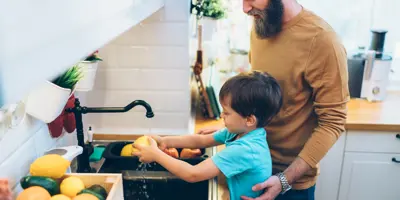
4 tips to organise chores for kids with printable chore chart
Getting the kids involved in the chores will help make your life so much easier. Use our printable kids’ chore chart and chore ideas to get organised today.
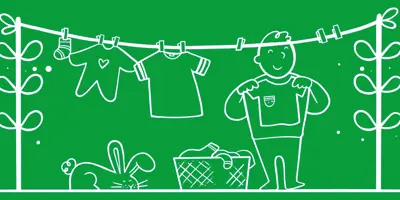
Clean and green! 10 tips for eco-friendly cleaning
From baking soda and lemon cleaning methods to a surprising kitchen cupboard treatment for mould, read our sustainable cleaning products ideas for your home!
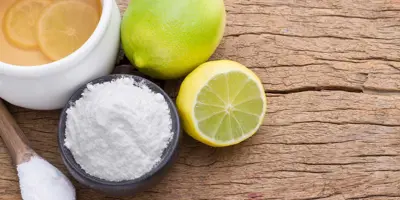
7 steps to create a DIY cardboard castle at home
Learn how to make a cardboard castle to fit their favourite interests. Find step-by-step cardboard castle DIY instructions and theme ideas here.
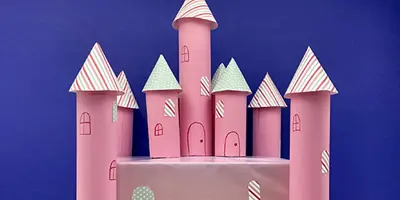
Reducing waste at home: The easy way
Find out how to save energy at home and reduce food waste with our top tips. Read on for handy pointers for making your household more eco-friendly.
